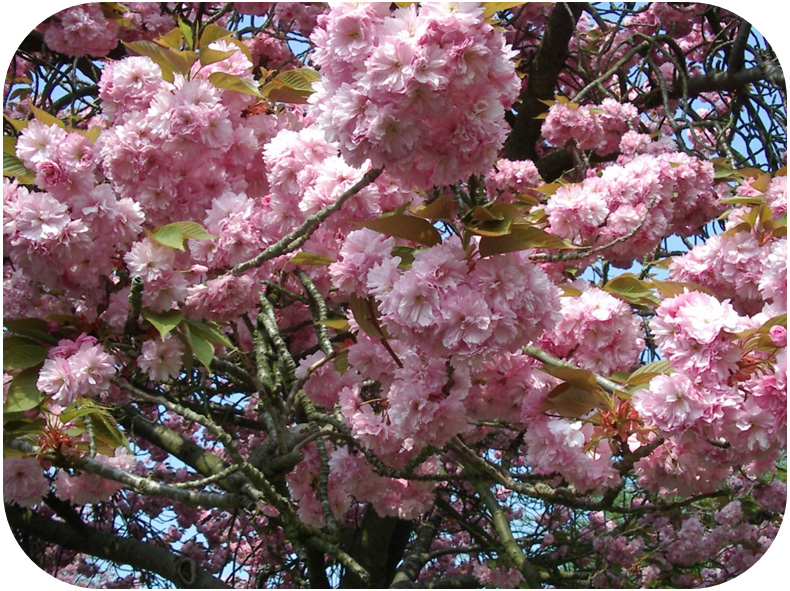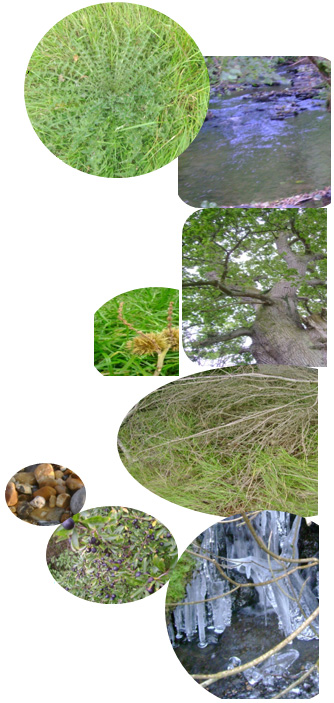
When compassion in the heart overwhelms my desires
Mother earth can furnish my journey in life,
Sweetened by her unprecedented nurturing,
Joyful are her treasures that support my learning.
Rich are the sounds with which she fills my bowl,
Bright are the colours that she speaks to my soul.
| ‘So, in his lordliness, God soars with the eagles and, in his humility he crawls with the worms.’ [‘And Now I See by Robert Barron; Crossroad Pub, 1998:175] |
Natural Nurturing
Thou burning sun with golden beam,
Inspiration from Nature
Descriptive words and phrases.
Extending a set of notes
The Yorkshire dales
Revising a poem
Profound and true
Nature as our teacher
It’s Only a Tree
Following the Path of Nature
| Thou burning sun with golden beam, thou silver moon with softer gleam: Thou rushing wind that art so strong, ye clouds that sail in heaven in heaven along Thou rising moon, in praise rejoice, ye lights of evening find a voice. Thou flowing water, pure and clear make music for thy Lord to hear. Thou fire so masterful and bright, that gives us both warmth and light: Dear mother earth, who day by day unfoldest blessings on our way. The flowers and fruits that in thee grow, let them his glory also show. All creatures of our God and king, lift up your voice and with us sing alleluia (God be praised)……… [Quoted from the verses of the hymn by William Henry Draper;10 – Anglican Hymns Old & New Kevin Mayhew. |
Inspiration from Nature
The natural world is a tremendously stimulating environment for all forms of creative expression. Much of the richness of creative communication inspired by the natural world is spontaneous and thereby unrecorded. Mood, feelings, body language and social interaction are not necessarily presented in a memorable or verbal form. That which is expressed in a verbal form, held as a memory within an unforeseeable future, may serve only the moment by moment experiences, and thereby remain elusive to any form of attainable record.
The creative value presented by Malaguzzi as the ‘100 languages of children’ (Bancroft,2007:14,citingMalaguzzi) presented creative activity as opportunity for reflection, assessment and progressive development. The Reggio Emilia approach to education uses various media in order to create different representational sequences and combinations that record children’s creative activity. The Reggio exhibition expanded the psychology of intellectual development into a kaleidoscope of creativity illustrated through the children’s world of communication - ‘a shining testament to human possibilities’ (Gardener cited in Children in Europe,2004:3). ‘......the capacious and inspiring conception of children - as active, engaged, exploring young spirits, capable of remaining with questions and themes for many weeks, able to work alongside peers and adults, welcoming the opportunity to express themselves in many languages, to create new ones, and to apprehend and enter into those modes of expression that are fashioned by their age-mates.’ (Gardener cited in Children in Europe,2004:17) Different materials and media are considered important because they engage the children in a personally meaningful context that connects to other meaningful experiences. The creative value presented by Malaguzzi as the ‘100 languages of children’ (Bancroft,2007:14,citingMalaguzzi) appears to integrate the different aspects of human intelligence described and displayed as examples within the context of the ‘100 languaes of children’.
Through a medium inspired by a natural environment the following activities may encourage creativity to expand, stretch and consolidate verbal expression. The activities are presented in an order that progresses from unlanguaged sensory experiences to those that are strongly linked with verbal (spoken or written) communication. Any part of any of activity can be done independently and the activities can be adapted to circumstance, age and ability, time available, individual preference, motivation, talents and interest.
Descriptive words and phrases.
Extending a set of notes
Poetry can be inspired by simply describing an experience in words and phrases. Later the desire to deepen and enrich the recall of the experience can encourage us to transform initial notes into an extended piece of prose. This process is illustrated in the poem below. The brown words are the key words that were extended into poetic prose to produce the final poem as shown.
The Yorkshire dales
Valleys so steep and deep
Challenging my strength to climb
And my agility in descent.
An invitation upwards
Over waves of smooth cobblestones
Roads of so long ago.
Paths sliding over boulders,
Dodging between rocks,
Brushing through the heather.
Off-set gates - hard to open
And difficult to shut
Some only 1 ½ legs wide.
Tree roots crocheted into the ground
Water escaping from the inner earth
Excited, recklessly calling, rejoicing.
Warm and cosyhouses miniaturised, inviting;
Footpaths tiptoeing past front doors,
Tracks sneaking through backyards.
Valleys so steep and deep
Challenging my strength to climb
And agility in descent.
Revising a poem
Words and phrases that have been noted as expressions related to a particular experience, can be elaborated into a fuller and richer presentation by simply focusing on the nouns and verbs. For Example: mark the nouns (naming words) and, if the word is preceeded by an, a, or the, see if you can put a word or two inbetween the a, an or the and the naming word e.g. ‘the tree was tall’ could become the strong tree was tall or the tall tree was very strong..... When you have finished expanding the naming words then look for the verbs (the action words) and see if you can place a describing word/s before or after the action word so that there is more descriptive information for the reader, e.g. The tree swayed in the wind could become The [tall] treeswayed [slowly] in the [quiet forest ]wind.
Profound and true
A sea of bluebells vibrant standing tall
Carpeting the woodlands in that special violet-blue.
Clusters of spring yellow primrosespunctuate the tracks and trails.
Sunlightstreams passed the luscious young foliage,
Between strong tree trunks and branches
Adorned with colour above and below.
The birds joyously singing in praise to this new rich tapestry,
Delicate butterflies spontaneously blessing all around them
As they flutter through their day.
And my heart melts with the beauty of it all
As I witness, silent and still,
Feelings of harmony so profound and true.
- Go to a natural outdoor place you know. Have a gentle walk around and take some time to explore in freeplay. Then get a piece of paper with two squared columns drawn on it and something to write with. In each square in the first column write about your experiences as a list of nouns, naming words preceeded with ‘the’, ‘a’, or ‘an’. In the second column write a list of verbs, words that describe your actions, what you actually did or felt. Colour each column in a different colours then cut out the two sets of words individually. Try to match the naming words with the action words then use them to create descriptive phrases or sentence, e.g. Irandown thehill. Adogwasbarkingat thecows. Some of the phrases may describe what really happened, others may just make imaginative or funny non-sense, e.g. the strange housewaslaughing at me.
- Using a cardboard picture frame, place it flat on a natural surface to gain a natural background effect for a picture. Then collect natural materials to place within this picture frame to form a natural picture that is aesthetically pleasing to the senses.
Nature as our teacher
The author has introduced the following poem to a family group of people as a detailed verbal description of what she saw when she took the picture show below. While describing the visual detail of the experience the listeners were invited to spontaneously create a corresponding draw. Thus, using large paper and large crayons the participants were guided to produce their own picture before they heard a reading of the poem or viewed the photograph.
It’s Only a Tree
Many fall within the isolation of an unwitnessed drama;
Yet you remain pivoted within my dreams of reality;
Stranded on the hard rocks of our time.
Captured by a long awaited demise
On this your spectacular resting place.
Awaiting a daring escape,
Another fall, yet to come.
In the space of nowhere,
Balanced between the winds that blow and the waters that flow
With only a subtle sway of compromise.
Daunting in your obscurity, you challenge our insecurities.
No more grounded in earthy foundations
Held within a silent theme,
Not entirely broken or easily forgotten
Yet there is no more glory
In this unknown story.
Past is the promise of leafy vegetation.

Following the Path of Nature,
Sometimes I feel life is a prickly circle,
Which looks so pretty
In its patterns of green.
Until you try to sit down.
Sometimes I want to run free
With variable depths and cool perseverance,
And a persistent return to clarity.
Under the constant surrender of harmonious sounds
From the musical language of eternal movement.
Sometimes I wish I could be as tolerant as the great oak.
With a few broken branches
It remains majestic and awesomely present.
Bold and broad it encompasses the circles of time
Within its earth bound girth.
Some days my defences make me feel spiky all over.
Shielding those hidden sweet soft gifts
Held so tightly, as seeds of abundance,
A protected fertility not easily nurtured.
Sometimes I wonder if like the fallen branches
I am also clawing my way back into the earthy elements;
To be in substance once again,
That of the minerals that heralded my conception.
Sometimes I feel as insignificant as a pebble on the beach.
Knowledgeable, indefinable amongst so many others;
Unique without being special,
As tiny specks in a universal field.
Sometimes like the sloe berries
With a false sense of good fortune,
I can look abundantly tempting;
While within is only the sourest taste
Sometimes I am a frozen picture of delight,
Thawing as the sun comes out,
Melting into the next moment of creation.
Never again to be seen as I once was,
A picture of beautiful creativity.

